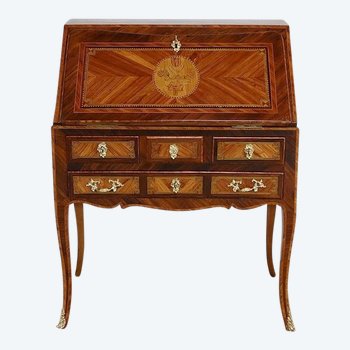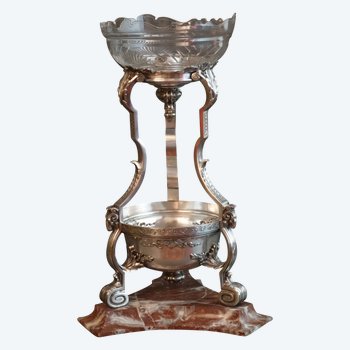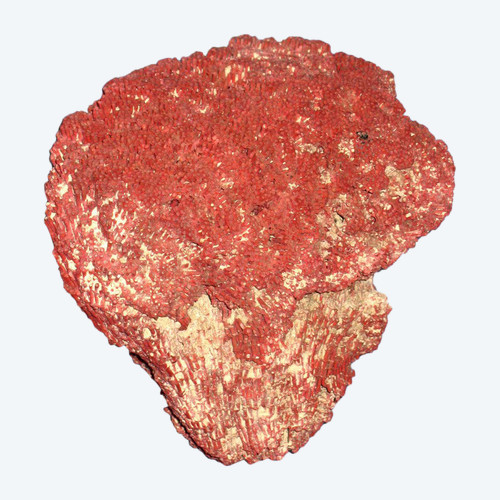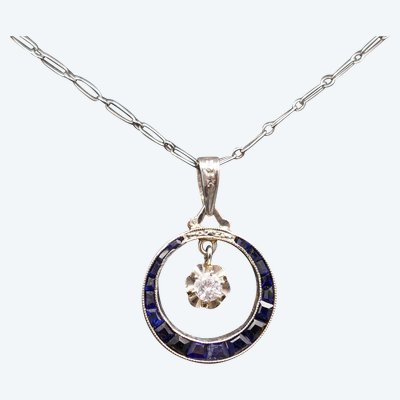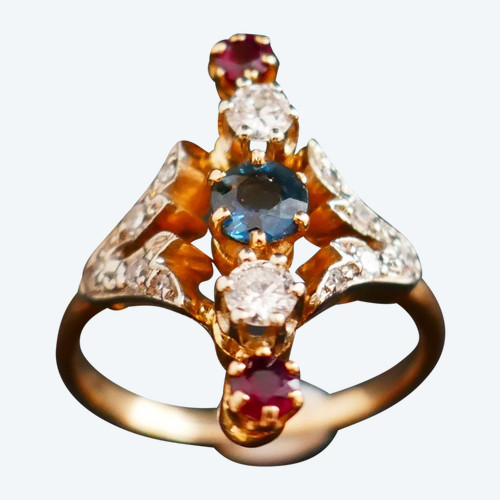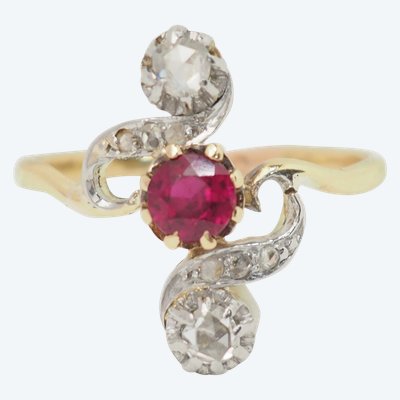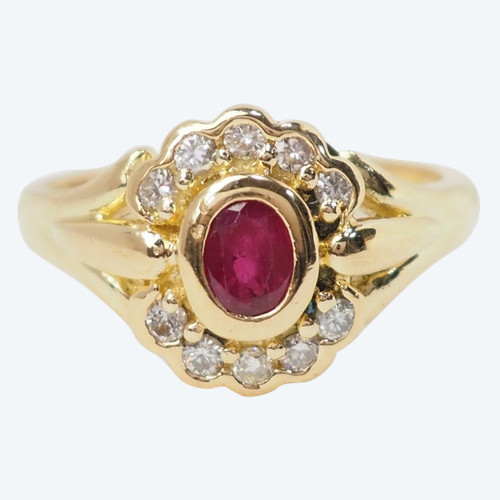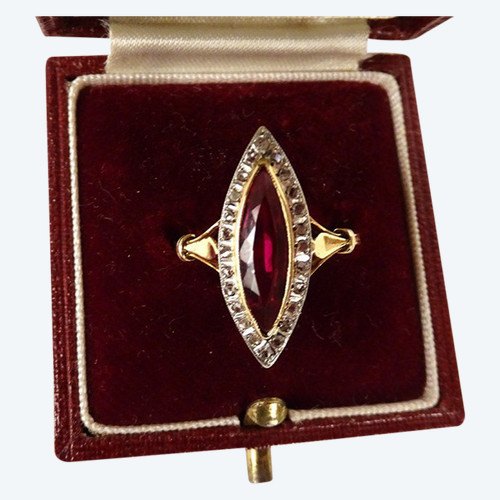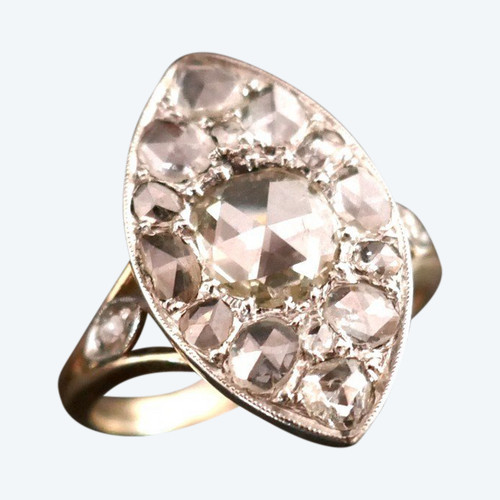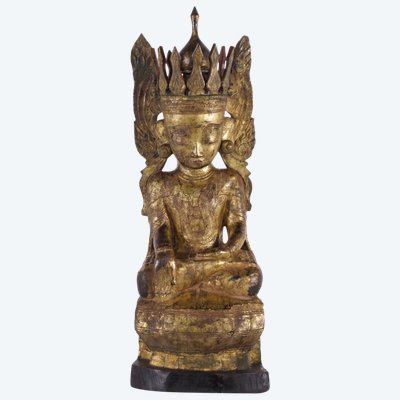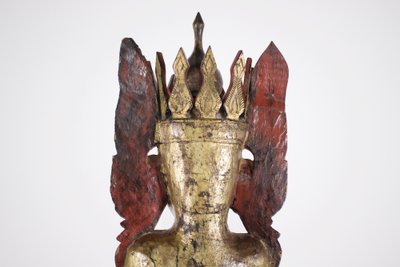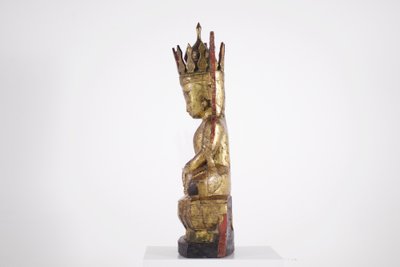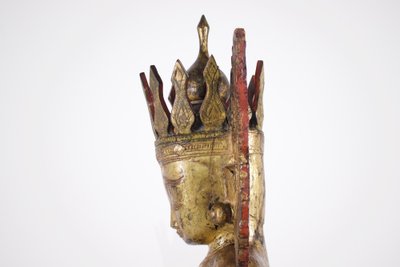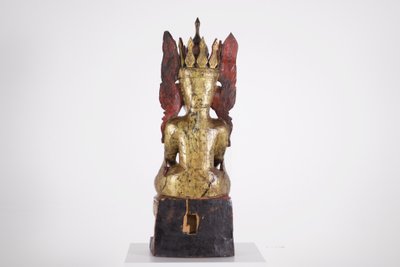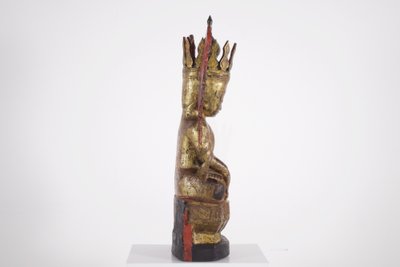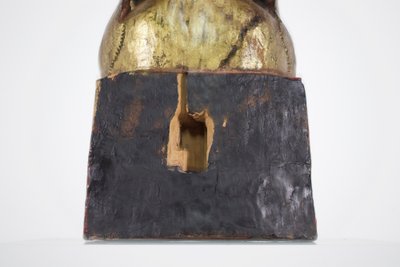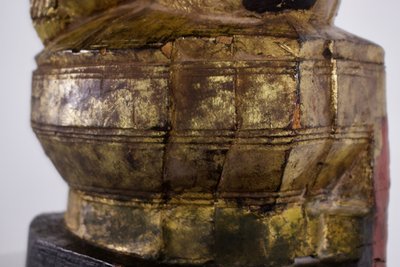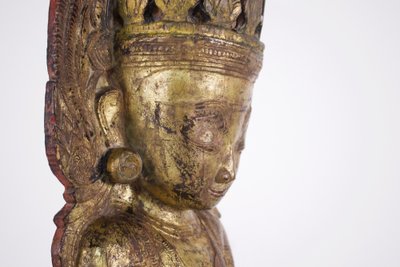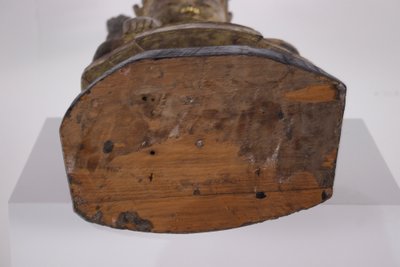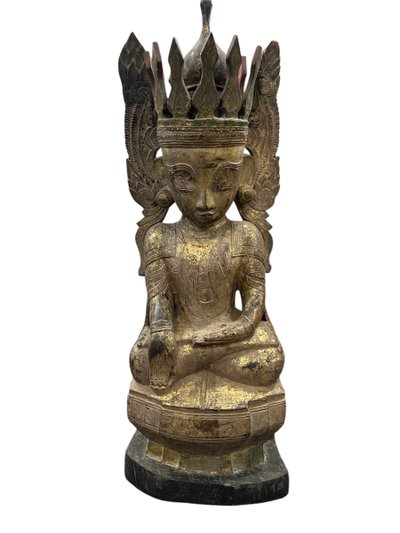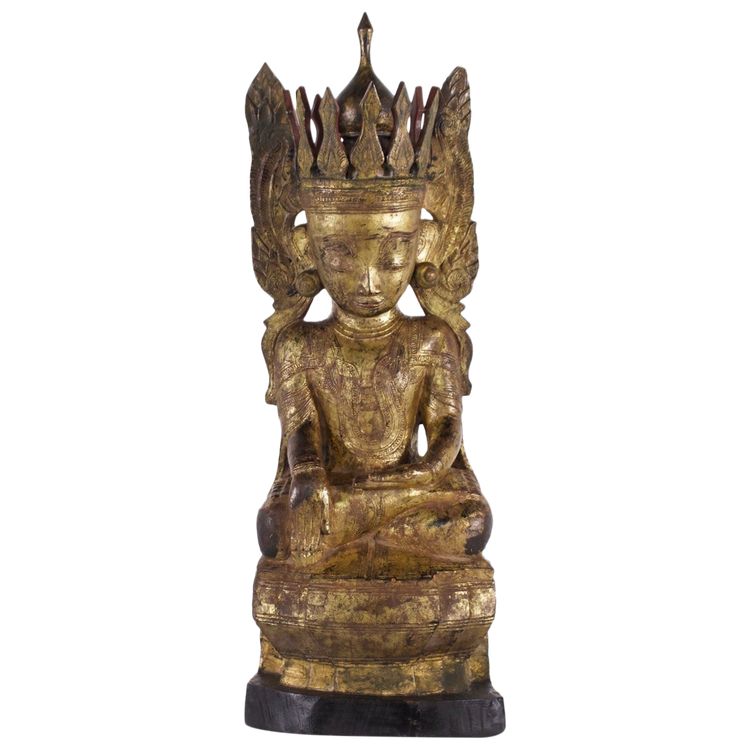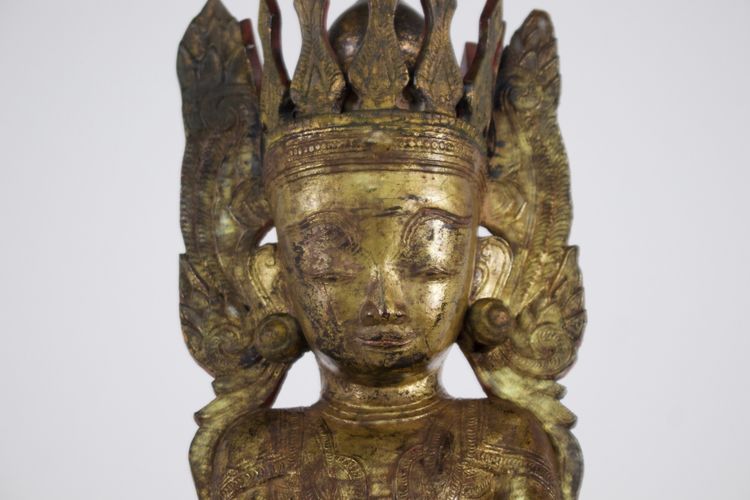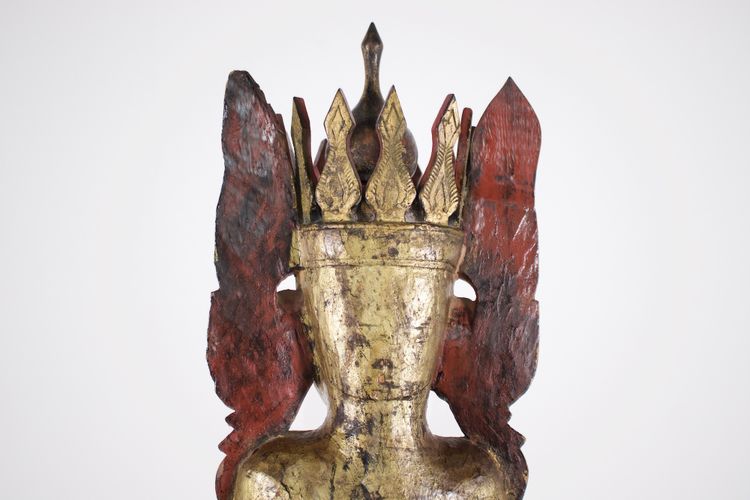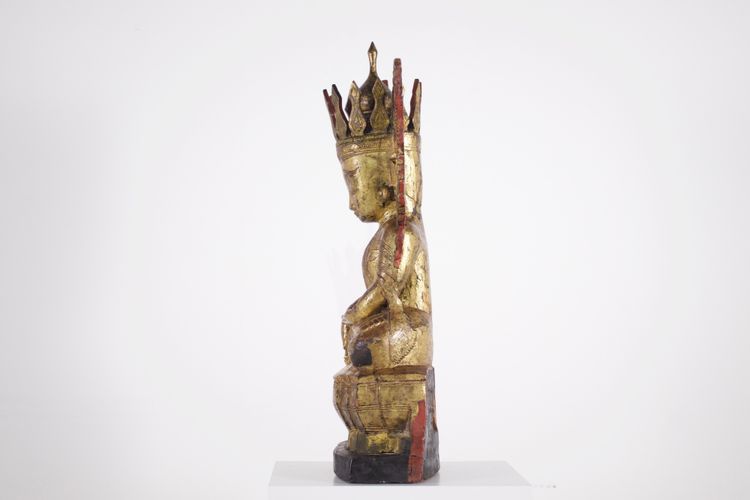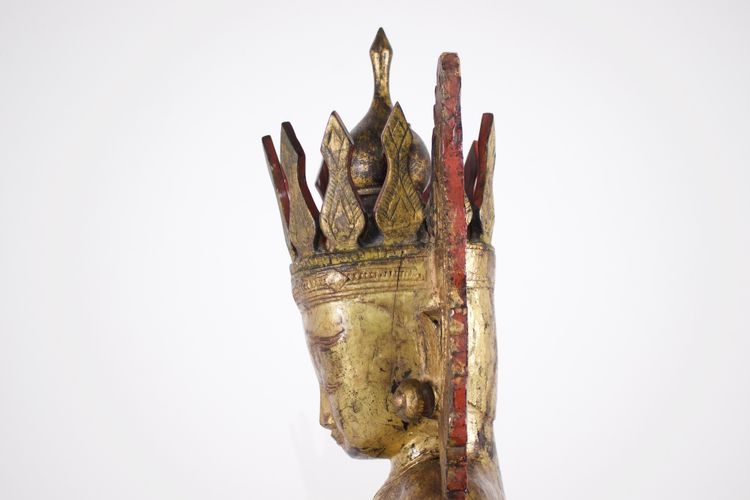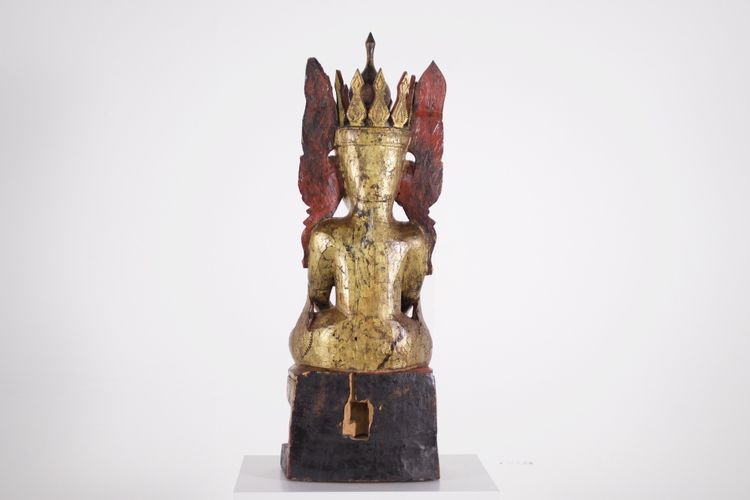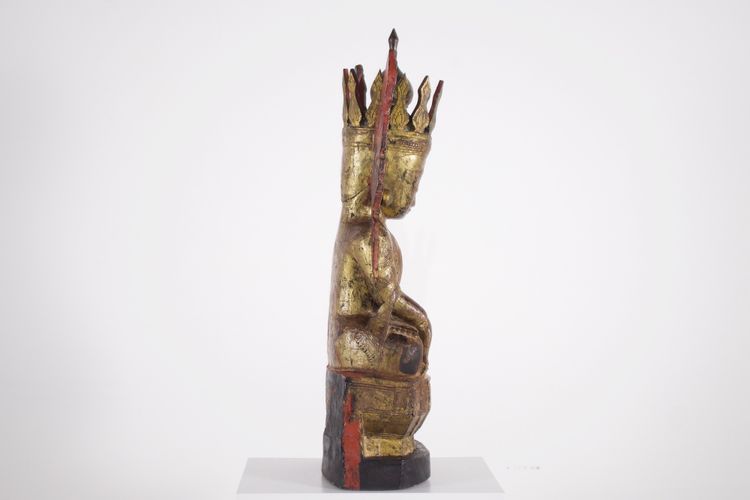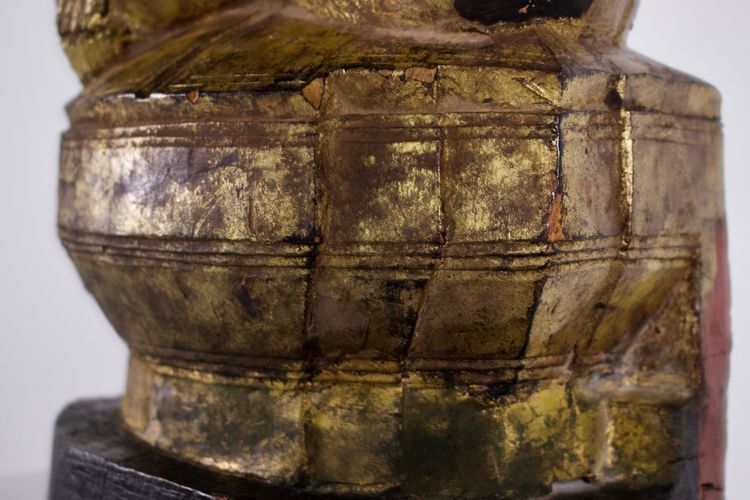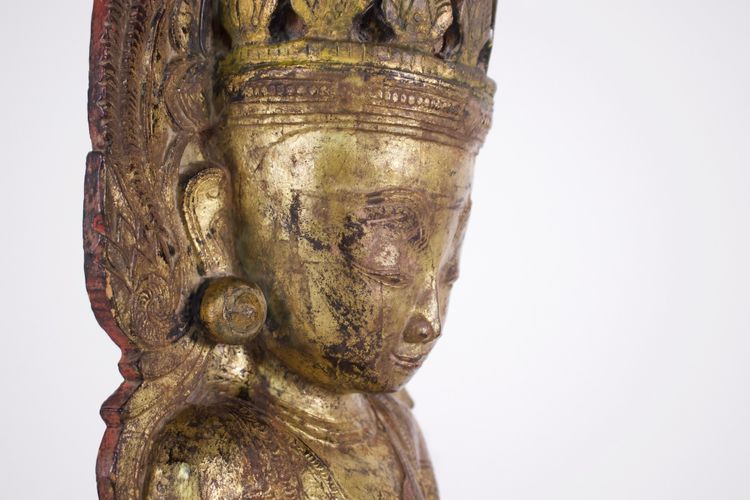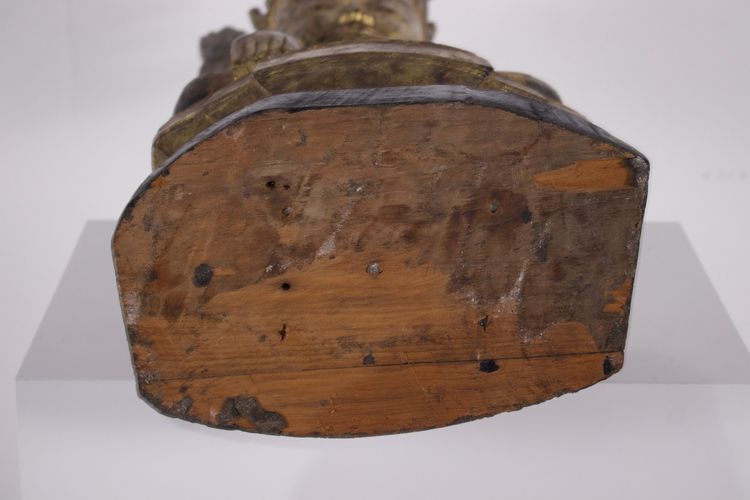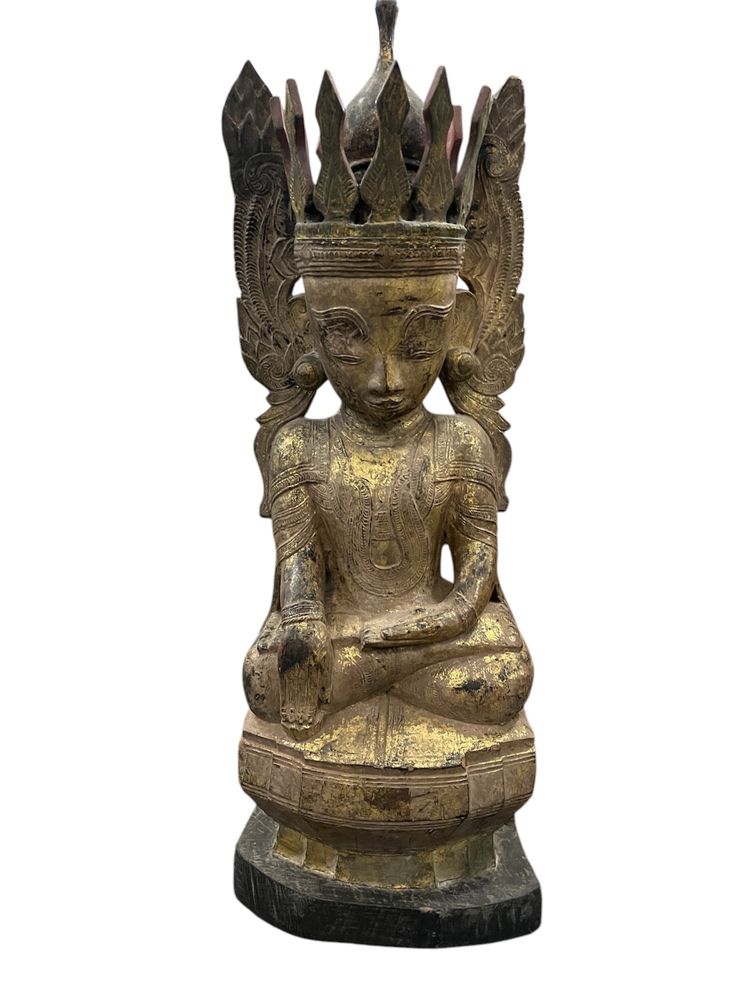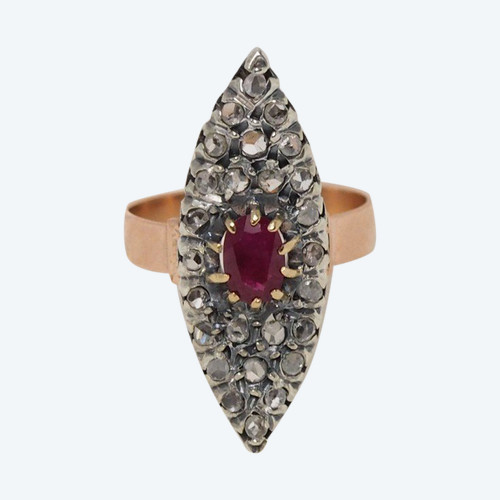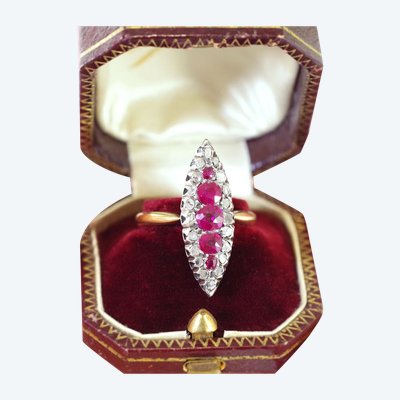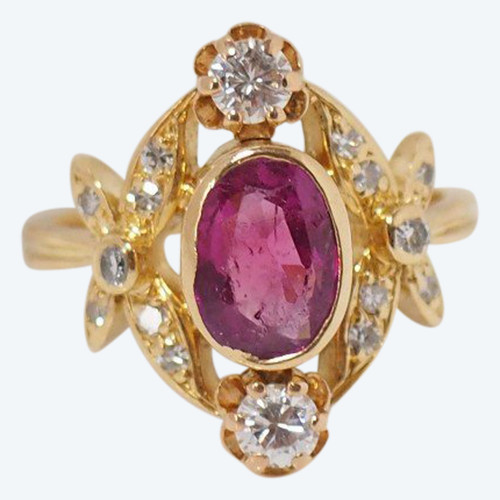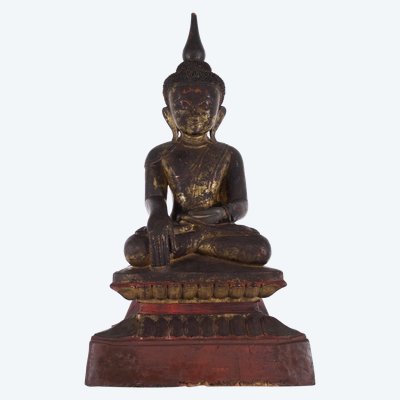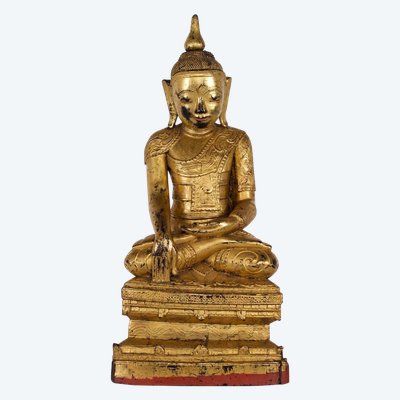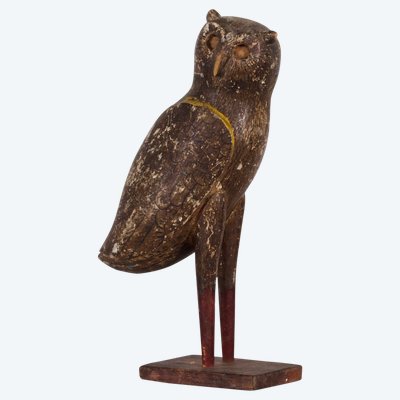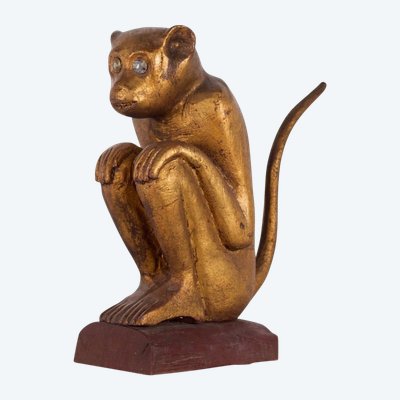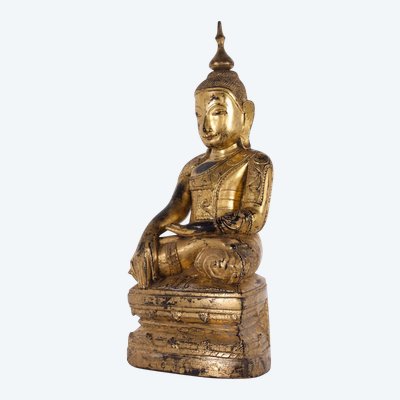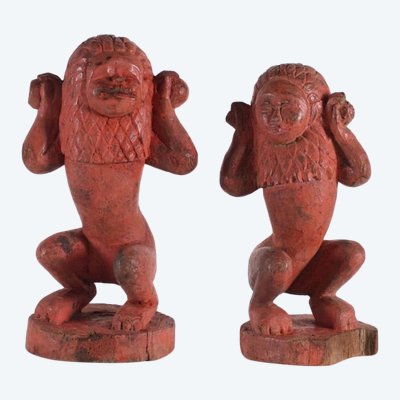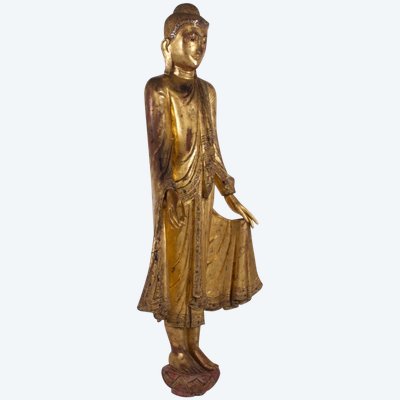This description has been translated and may not be completely accurate. Click here to see the original
The Buddha represented in the Jambupati manifestation, dressed in royal garb and adorned with jewels. With his right hand in bhumisparsa mudra, his serene face is covered by an elaborate crown and flanked by two flaming wings.
Covered in black lacquer and gilding, its black base is of a later date.
Burma (Myanmar), Shan princely states, late Konbaung period (1752-1885)
Provenance: Estate of dealer and collector Claude de Marteau.
Sold with certificate of provenance.
The Jambupati (Jambhupati) Buddha is a particular form of Buddha. He is depicted adorned and venerated in Theravāda Buddhism, particularly in Burma. According to legend, Jambhupati was a powerful and arrogant king, whom the Buddha transformed into a humble monk to teach him compassion and impermanence. This story symbolizes spiritual transformation and the importance of humility in Buddhism. Representations of Jambhupati are often worshipped to invoke protection and prosperity.
In Buddhism, impermanence ("anicca" in Pali and "Anitya" in Sanskrit) is one of the three characteristics of existence, along with suffering (dukkha/duhka) and absence of self (anatta/anatman). It means that all phenomena, all things, are in perpetual change. Nothing is permanent, be it material objects, thoughts or emotions. This awareness helps cultivate detachment and reduce attachment to ephemeral things.
A fourth notion, central to the other three, exists in Mahayana Buddhism: emptiness (Suññatā / Śūnyatā):It expresses the idea that all phenomena are devoid of their own existence or "self". This means that nothing exists independently, but rather interdependently with everything else.
The Buddha is generally depicted as a renunciant... detached from material possessions, so why is he depicted with royal ornamentation? The royal ornamentation here symbolizes the Buddha's spiritual superiority over earthly power. It's a way of showing that wisdom and compassion surpass worldly wealth and power.
Excerpts from Paul MUS, bulletin de l'Ecole Française ď Extrême-Orient, ÉTUDES INDIENNES ET INDOCHINOISES, 1928, pp 153.
"A Pale Sutra read in Laos tells us that the proud Jambupati, summoned by Indra to come and pay homage to the Buddha, sees him "on his throne, beautiful as a god, dressed in luminous garments", in all his glory as king of kings . Now, to the austere simplicity of the Indian Buddha's monastic robe, "Thai devotion would have preferred without hesitation a sumptuous costume, glittering with gold and gleaming with precious stones. But to risk such a serious breach of tradition, an ingenious solution had to be found: the Jambupati was just the thing. Since the Buddha at least once wore the royal costume, it could not be forbidden to represent him in this way.
"M. Finot, who visited Burma, noted that, by a singular transposition, the Buddha himself is now called Jambupati. Archaeologist Taw Sein Ko identifies an adorned "Buddha" found in Pagan. "The mutilated image of the Buddha is dressed in royal costume. The Burmese call it Jambupati"... This representation of the Sage is unknown in the Pale scriptures and can only be attributed to the Northern school. Whatever one may think of the piece, which in any case is more a bodhisativa than a buddha, Burmese tradition supports M. Finot's conclusions. If a holy statue wearing royal ornaments is still called Jambupati, this identification can only have been inherited from an interpreter more familiar with extra-canonical Paleo. Indeed, this interpreter knows not a Jambupati Buddha, but the Jambupati Buddha.
See this Burmese Buddha Jambupati "King of Kings" in full screen mode on Vintage Addict
Ref: LVHQ8J6JZA

